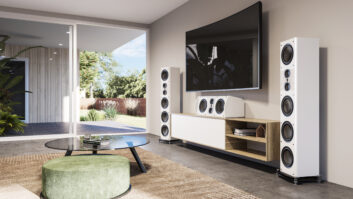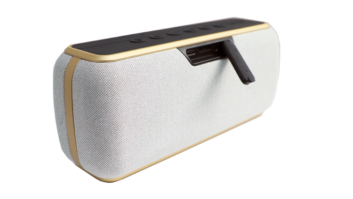On the hit reality TV series The Osbournes, rock ‘n’ roll icon Ozzy Osbourne’s clumsiness when operating his home entertainment control system can be attributed to a wild-and often self-destructive-life on the road. For many homeowners, however, it is age, not a history of hardcore substance abuse, that places new demands on their lifestyle. The size of the font featured on the control panel, for example, may have to be enlarged or the programming of the overall system may have to be altered to accommodate an individual who has become less mobile. Regardless of the homeowner’s specific requirements, today’s residential technology is capable of being tailored to an aging population.
“The ability to integrate a variety of different systems and be able to control them from a central location is helpful to an elderly customer,” noted Jason Frenchman, corporate communications director at Crestron Electronics Inc. (crestron.com).
Recognizing this, Crestron recently donated a number of systems to the Jewish Home of Rockleigh, a retirement residence located near the manufacturer’s headquarters. While these systems are programmed to assist the elderly, a number of Crestron dealers have been involved in integrating systems that will help the physically challenged. One Chicago-area project involved a wheelchair-bound resident who had the integrators design a robotic arm that holds the Crestron touch panel as a tray. When he is using the touch panel, it sits in front of him at lap level, and when he is finished using it, the robotic arm moves it out of the way. The touch panels affixed to the walls throughout the home are mounted at an appropriate height to ensure accessibility.
“With custom systems like ours, you can account for things like that, install things properly and program them to accommodate whatever the user needs,” Frenchman said. “People who don’t have the ability to get up and change the channel or turn something off can really use home automation, and it’s nice that we can take care of those needs through our technology.”
Progressive Audio, a custom installation and systems integration firm operating out of Columbus, Ohio (www.progressiveaudio.com), has had a similar experience with a client who is slowly going deaf. “He built a home that we automated with the ability to overcome his loss of hearing with things like flashing lights when the doorbell rings,” explained Aaron Carmack, Progressive Audio’s director of marketing. “There is an opportunity with the handicapped as well as with the aging population; there are all kinds of things that automation can do.”
Jay Sherman, director of the residential products division at Leviton Manufacturing Company (www.leviton.com), recognizes that today’s systems are capable of increasing the level of independence that is so important to many approaching senior citizenship. “One of the concerns of the elderly is making their homes more safe and more convenient to get around,” he said. “They want to keep themselves living alone and independent, as opposed to moving into a seniors’ living community. Because they offer a universal design, products like Leviton’s Decora home control products facilitate that, and make it easier for the elderly to stay at home longer.”
The simplicity that ELAN Home Systems (www.elanhomesystems.com) offers are well suited to an elderly clientele, but address anyone who appreciates functionality at the touch of a button. “Our industry is heading toward complete systems integration, ” said Rick Gratz, ELAN’s product manager. “When you can do anything on a touch-panel system-size the button to any size and use any font-it’s geared toward anyone.”
Carmack added, “I don’t care if it is a 25-year-old self-made millionaire or a 75-year-old affluent customer, what is common is that the interface must be simple. What is simple for one client may be complicated to another.”
With clients that have not grown up using technology, Carmack says he finds it easiest to only provide the technology that has been requested, with few added capabilities. “If they are not interested in burning MP3s to CD, I am not going to give them the capability to do that. It’s about creating the system specifically for the customer.”
Robert Kranson, president and principal at Axiom Design, Inc., a firm based in Pleasanton, California (www.axiomdesign.com), recognizes that while elderly clients may have some needs in common, it’s important to avoid stereotypes and focus on each customer as an individual. “When you look at any demographic, there is going to be a range of requirements that are going to be based on the client, their willingness to experiment with technology, their level of technical expertise. Possibly, some of them might find it scary, and try to rectify that,” he said. “This demographic has certain requirements that need to be given consideration in the design process. The effort is really on the designer understanding and recognizing that based on someone’s age or physical disability, they have higher priorities put on some things over others.”
Axiom’s design-only model avoids placing individual clients into a stereotypical category, according to Kranson. “In a situation where there is someone who is physically challenged, you may actually have to give consideration as to multiple ways to interact with a touchpanel,” he said. “Something may have to be at one height for someone who is wheelchair-bound, but it may have to be at a different height to allow someone who is taller to also be empowered by the solution.”
As the U.S. population ages, the number of elderly homeowners that are willing to invest in these systems is increasing. Observed Kranson, “It’s amazing the number of clients that we have that acknowledge that they are not as spry as they once were, and they want to consider these things as they move forward.”
Carolyn Heinze ([email protected]) works from her office in Vancouver, Canada.







